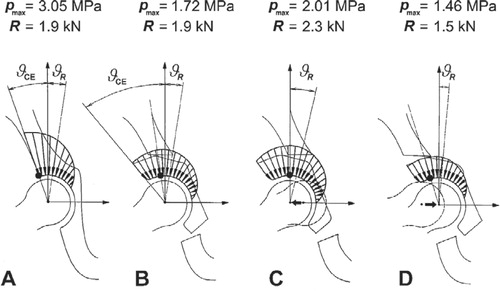Figures & data
Clinical, radiographic and mechanical results for the 26 hips, stratified into 3 subgroups according to clinical outcome
Simulation of the contact stress distribution in the hip joint before and after a periacetabular osteotomy in a single patient. In dysplastic hip, the contact stress increases drastically towards the lateral edge where the peak of the contact stress is located (A). Increase in lateral center-edge angle reduces the magnitude and shifts the location of the peak contact stress, even if the resultant hip force remains unchanged (B). Lateralization or medialization of the periacetabular fragment increases or reduces the peak contact stress due to the change in magnitude/direction of the resultant hip force, even if the lateral center-edge angle is the same (C and D). The location of the peak stress, pmax, on the weight bearing surface is marked with a dot. R denotes the resultant hip force, ϑCEis the lateral center-edge angle of Wiberg, and ϑRis the vertical inclination of the resultant hip force (adapted from Srakar et al. Citation1992, Iglic et al. Citation1993b).

